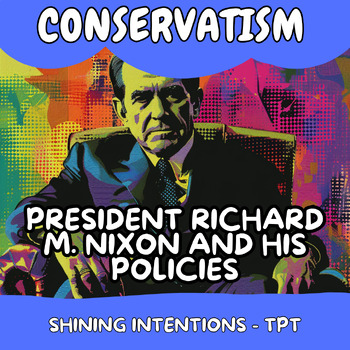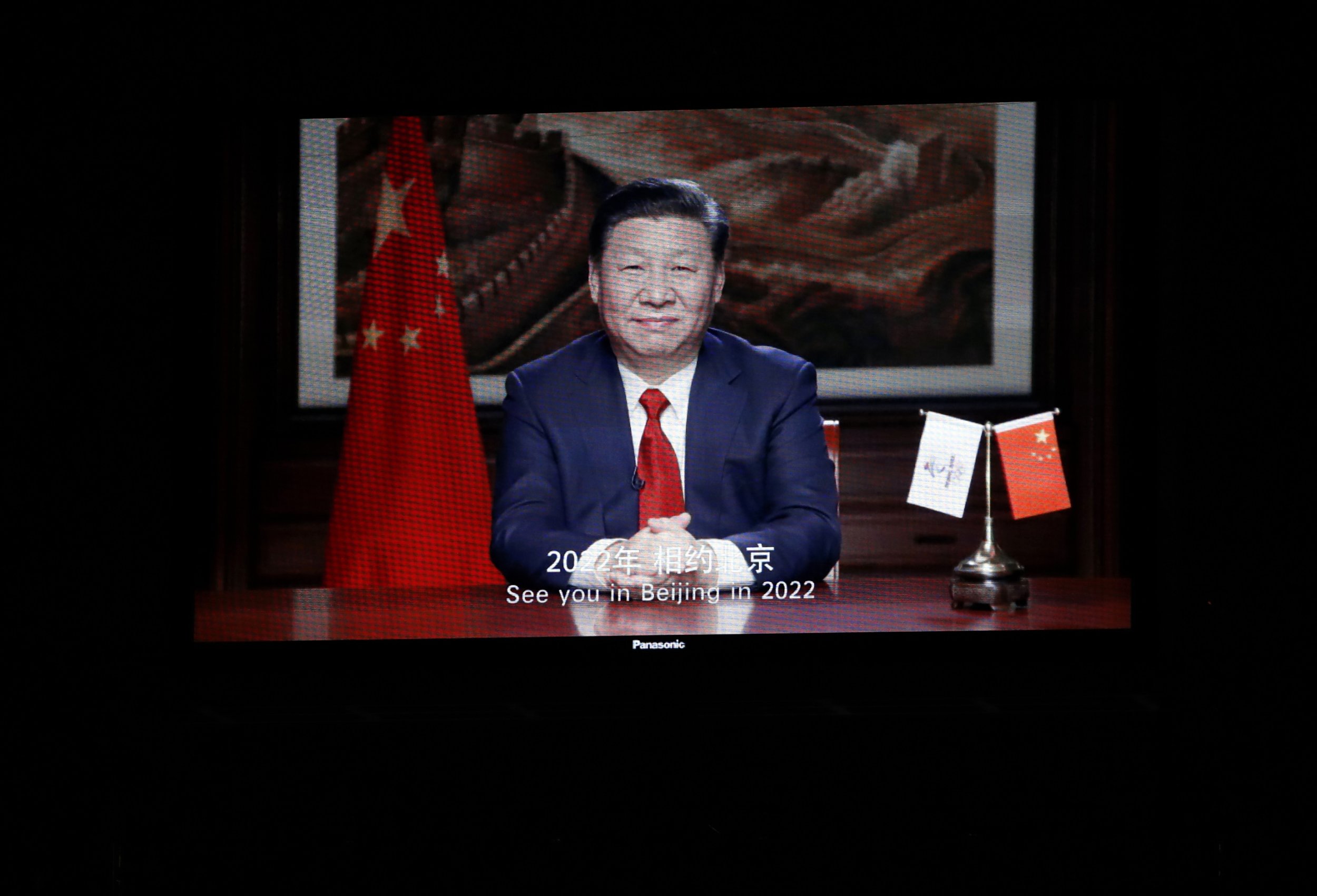Nixon-Era Parallels? Analyzing The U.S. Dollar's Current Trajectory

Table of Contents
The Nixon Shock and its Legacy
President Nixon's "Nixon Shock" of August 1971 irrevocably altered the global monetary landscape. He unilaterally closed the gold window, ending the Bretton Woods system – a post-World War II agreement that pegged the U.S. dollar to gold, and other currencies to the dollar. This decision, driven by persistent balance-of-payments deficits and inflationary pressures within the United States, had profound and lasting consequences.
The immediate aftermath saw a surge in global uncertainty. The fixed exchange rate system collapsed, leading to floating exchange rates and increased volatility in currency markets. The long-term consequences were equally significant.
- Increased Inflation: The removal of the gold peg fueled inflation globally, as currencies were no longer constrained by a fixed value relative to gold.
- Shift to a Fiat Currency System: The U.S. dollar transitioned to a fiat currency – its value determined solely by market forces and government policy, rather than a physical commodity like gold.
- Increased Volatility in Exchange Rates: Currency markets became far more volatile, with exchange rates fluctuating significantly based on supply and demand, economic conditions, and geopolitical events.
- Long-term Impact on Global Trade and Finance: The Nixon Shock fundamentally reshaped the architecture of global trade and finance, paving the way for the modern international monetary system, which is characterized by floating exchange rates and increased interconnectedness.
Current Parallels: A Weakening Dollar?
Today, several factors are impacting the U.S. dollar's trajectory, drawing comparisons to the pre-Nixon Shock era. While the context differs, the underlying pressures are, in some ways, eerily similar.
- High Inflation and Rising Interest Rates: Persistent inflation, currently elevated in many countries, is forcing central banks, including the Federal Reserve, to raise interest rates. Higher rates, while intended to curb inflation, can also make the dollar more attractive to foreign investors seeking higher returns, but also increase borrowing costs and potentially slow economic growth.
- Geopolitical Instability and the War in Ukraine: The ongoing conflict in Ukraine, coupled with broader geopolitical tensions, has introduced significant uncertainty into the global economy, impacting the demand for the dollar as a safe haven asset. This uncertainty can lead to capital flight and decreased demand for the dollar.
- Increased National Debt: The substantial and growing U.S. national debt raises concerns about the long-term solvency of the dollar and its ability to maintain its global dominance.
- The Rise of Alternative Currencies: The emergence of cryptocurrencies and the growing use of the Euro and the Yuan as alternative reserve currencies challenge the dollar's hegemony in international trade and finance.
Bullet Points:
- Recent trends show a mixed picture for the dollar's exchange rate. While it has strengthened against some currencies, it has weakened against others. The volatility underscores the uncertainty surrounding its future.
- US monetary policy, while aiming to control inflation, simultaneously impacts the dollar's value. The effectiveness of these policies in maintaining stability remains a key question.
- Global economic uncertainty, fueled by factors ranging from the war in Ukraine to supply chain disruptions, significantly influences investor sentiment and the dollar's trajectory.
Inflationary Pressures: Then and Now
Both the Nixon era and the present day are marked by significant inflationary pressures. However, the underlying causes and the responses differ. In the Nixon era, inflationary pressures were linked to increased government spending and the expansion of the money supply. Today, inflation is driven by a complex interplay of factors, including supply chain disruptions, increased energy prices, and robust consumer demand.
- Analyzing the effectiveness of current monetary policy tools like interest rate hikes reveals mixed results. While they aim to control inflation, they also carry the risk of triggering a recession.
- Future inflationary scenarios are difficult to predict with certainty, but several potential paths exist, ranging from a relatively soft landing to a more protracted period of high inflation.
Divergences: Key Differences from the Nixon Era
Despite the parallels, crucial differences exist between the current situation and the Nixon era.
- The Globalized Nature of the Current Financial System: The global financial system is far more interconnected than it was in the 1970s. This interconnectedness can both amplify and dampen the impact of shocks to the U.S. dollar.
- The Role of Technology (e.g., Digital Currencies): The rise of digital currencies and fintech introduces new complexities and uncertainties into the international monetary system.
- The Emergence of New Economic Powers: The emergence of China and other significant economic players has fundamentally reshaped the global economic landscape, challenging the dollar's historical dominance.
Bullet Points:
- These differences could either mitigate or exacerbate the potential for a major crisis. Increased interconnectedness could spread shocks faster, while technological advancements might offer new tools for managing volatility.
- The U.S. dollar's resilience is considerable due to its deep liquidity and the size of the U.S. economy. However, this resilience is not guaranteed and is subject to various domestic and international factors.
Predicting the Future U.S. Dollar Trajectory
Predicting the future U.S. dollar trajectory is inherently speculative, given the numerous interconnected factors at play. However, several potential scenarios are plausible.
- Continued Decline: A continued decline could occur if inflationary pressures persist, geopolitical uncertainty remains elevated, and the national debt continues to rise.
- Stabilization: Stabilization could happen if inflation is brought under control, geopolitical tensions ease, and economic growth remains robust.
- Resurgence: A resurgence is possible if investor confidence in the U.S. economy improves significantly, interest rates in the U.S. remain relatively high compared to other countries, and geopolitical stability returns.
Bullet Points:
- The impact of factors like fiscal policy, the effectiveness of monetary policy in controlling inflation, and the resolution of geopolitical conflicts will greatly influence the U.S. dollar's future trajectory.
- Different assumptions about these factors lead to a wide range of possible outcomes, making definitive predictions challenging.
Conclusion
The U.S. dollar's trajectory remains a complex and highly debated topic. While historical parallels with the Nixon era exist, particularly concerning inflation and geopolitical uncertainty, significant differences – the globalization of the financial system, the rise of technology, and the emergence of new economic powers – suggest a unique path for the dollar. Analyzing these historical precedents alongside current economic and geopolitical realities is paramount to navigating the complexities of the global financial landscape. Continuously monitoring key economic indicators and remaining informed on the shifting global dynamics is crucial for understanding the ever-evolving U.S. dollar trajectory and its impact on global finance. Stay informed and prepare for the potential shifts in the U.S. dollar's value and global economic conditions.

Featured Posts
-
 Trump On Annexing Canada Xi Jinping And Presidential Term Limits Highlights From Time Interview
Apr 28, 2025
Trump On Annexing Canada Xi Jinping And Presidential Term Limits Highlights From Time Interview
Apr 28, 2025 -
 Harvard Researchers Deportation To Russia Louisiana Judges Decision Pending
Apr 28, 2025
Harvard Researchers Deportation To Russia Louisiana Judges Decision Pending
Apr 28, 2025 -
 Alabtkar Fy Mjal Tb Alhyat Alshyt Almdydt Abwzby Thtdn Mntda Ealmya
Apr 28, 2025
Alabtkar Fy Mjal Tb Alhyat Alshyt Almdydt Abwzby Thtdn Mntda Ealmya
Apr 28, 2025 -
 Could Espns Red Sox Outfield Prediction For 2025 Come True
Apr 28, 2025
Could Espns Red Sox Outfield Prediction For 2025 Come True
Apr 28, 2025 -
 Hudsons Bay Liquidation Sale Up To 70 Off At Remaining Stores
Apr 28, 2025
Hudsons Bay Liquidation Sale Up To 70 Off At Remaining Stores
Apr 28, 2025
Latest Posts
-
 La Collaboration Ines Reg Chantal Ladesou Dans Mask Singer Des Revelations Surprenantes
May 12, 2025
La Collaboration Ines Reg Chantal Ladesou Dans Mask Singer Des Revelations Surprenantes
May 12, 2025 -
 Nuits Saint Georges Candeloro Et Ladesou Participent A La Vente Des Vins
May 12, 2025
Nuits Saint Georges Candeloro Et Ladesou Participent A La Vente Des Vins
May 12, 2025 -
 Ines Reg Et Chantal Ladesou Une Nouvelle Polemique Enflamme La Toile
May 12, 2025
Ines Reg Et Chantal Ladesou Une Nouvelle Polemique Enflamme La Toile
May 12, 2025 -
 La Maison De Campagne De Chantal Ladesou Un Havre De Paix Pour Elle Et Ses Proches
May 12, 2025
La Maison De Campagne De Chantal Ladesou Un Havre De Paix Pour Elle Et Ses Proches
May 12, 2025 -
 Qui Est L Autruche Dans Mask Singer 2025 Indices Et Pronostics
May 12, 2025
Qui Est L Autruche Dans Mask Singer 2025 Indices Et Pronostics
May 12, 2025
